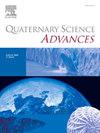趋同的证据限制了晚更新世白令海陆桥的历史
IF 2.2
Q2 GEOGRAPHY, PHYSICAL
引用次数: 0
摘要
白令陆桥是更新世(258万~ 1170万年前)重要的生物走廊和气候调节剂。了解陆桥最近暴露的时间,有助于了解过去的气候、动植物的现代分布,以及人类可能向美洲迁移的情况。虽然陆桥最近一次洪水的时间被限制在最后一次冰消期间,但其最近一次暴露在末次盛冰期(LGM, 26.5-19 ka)之前的时间则不太清楚。在这里,我们结合了三个学科的数据——古海洋学、海平面重建和陆地古基因组学——将白令海陆桥最近的暴露时间限制在LGM之前不久,比之前通过海平面上升重建与现代白令海峡海底深度的比较所提出的时间晚30-40 kyr。这些结果对理解人类到达美洲的时间和性质具有重要意义,并强调了跨古气候学和古生态学跨学科合作对于完善更新世环境史的重要性。本文章由计算机程序翻译,如有差异,请以英文原文为准。
Converging evidence constrains late pleistocene bering land bridge history
The Bering Land Bridge was an important biotic corridor and climatic modifier during the Pleistocene (2.58 million to 11,700 thousand years ago [ka]). Understanding when the land bridge was most recently exposed reveals insights into past climate, the modern distribution of plants and animals, and potential human migration into the Americas. While the timing of the most recent flooding of the land bridge has been constrained to during the last deglaciation, the timing of its most recent exposure before the Last Glacial Maximum (LGM, 26.5–19 ka) is less clear. Here, we combine data from three disciplines— paleoceanography, sea level reconstruction, and terrestrial paleogenomics—to constrain the most recent exposure of the Bering Land Bridge to shortly before the LGM, 30–40 kyr later than previously suggested by comparisons of eustatic sea level reconstructions with the modern Bering Strait Sill depth. These results have implications for understanding the timing and nature of human arrival in the Americas and highlight the importance of interdisciplinary collaboration across paleoclimatology and paleoecology for refining Pleistocene environmental history.
求助全文
通过发布文献求助,成功后即可免费获取论文全文。
去求助
来源期刊

Quaternary Science Advances
Earth and Planetary Sciences-Earth-Surface Processes
CiteScore
4.00
自引率
13.30%
发文量
16
审稿时长
61 days
 求助内容:
求助内容: 应助结果提醒方式:
应助结果提醒方式:


